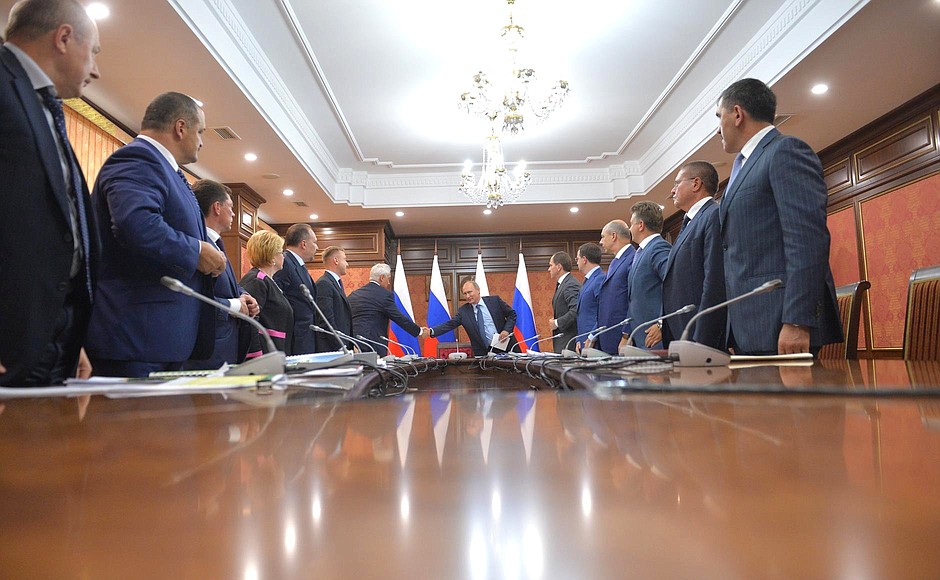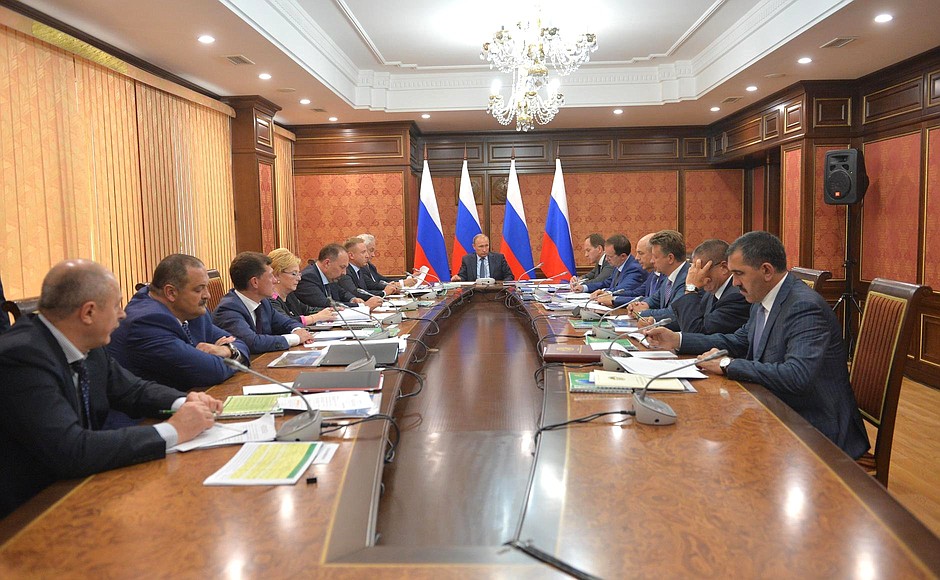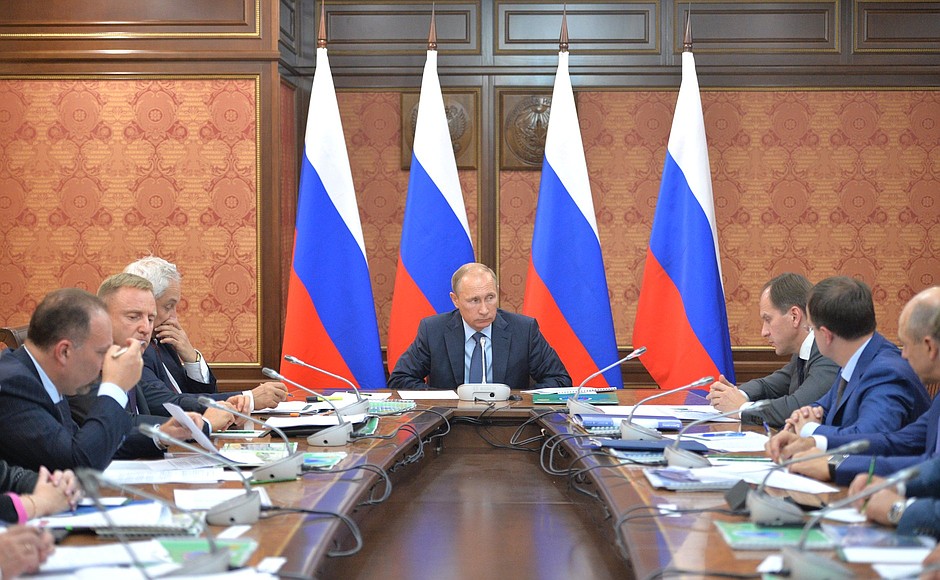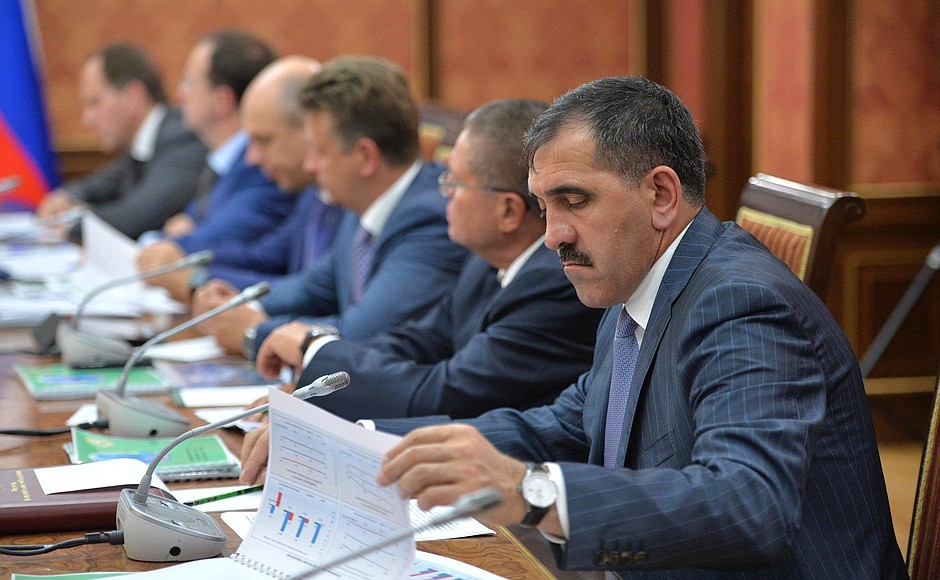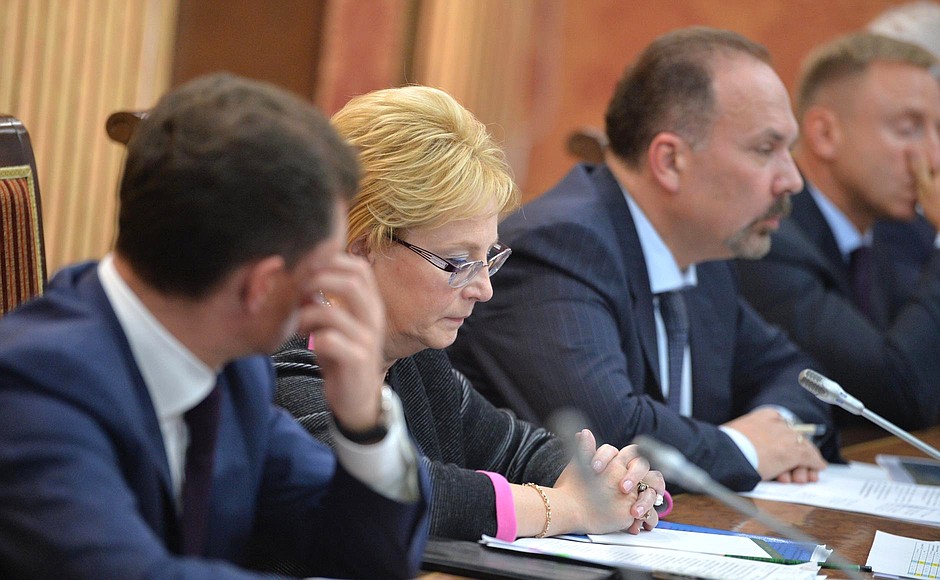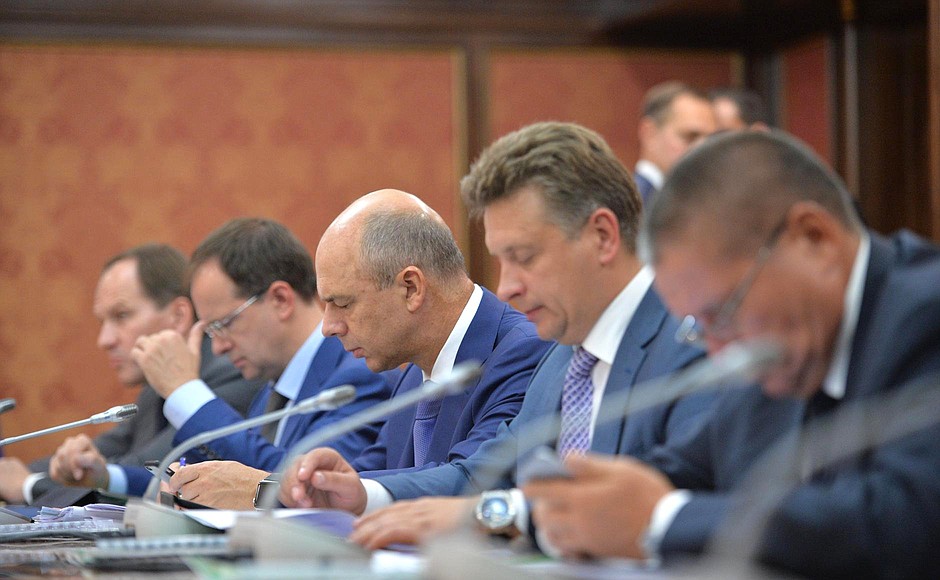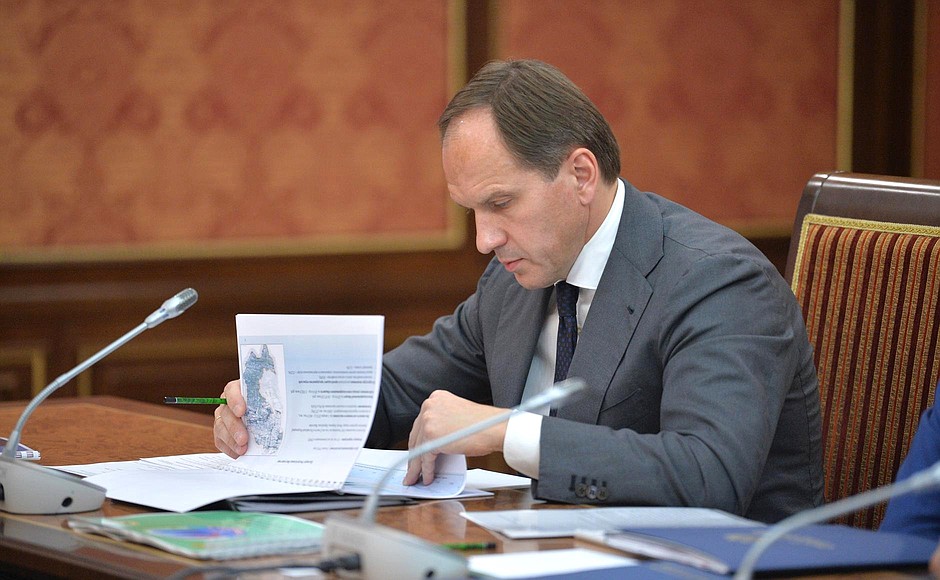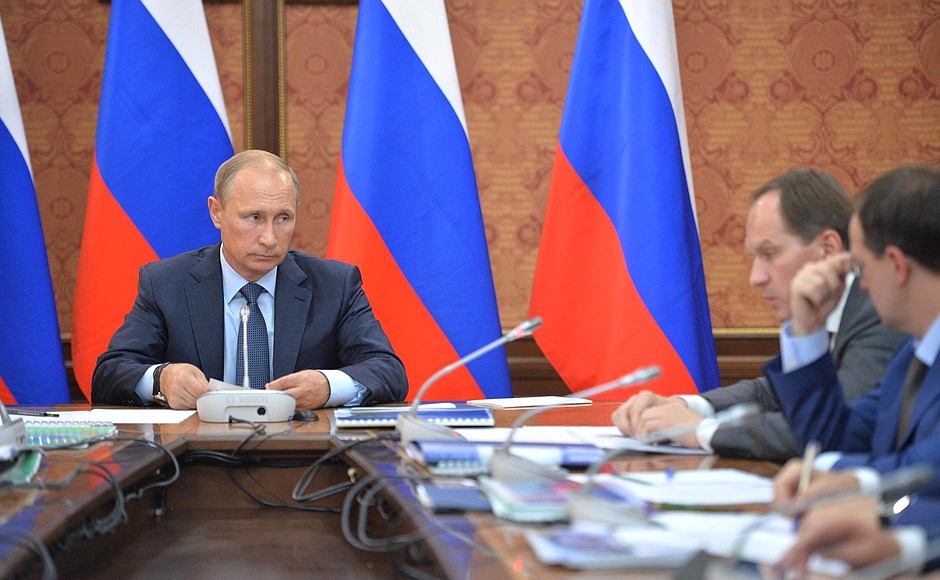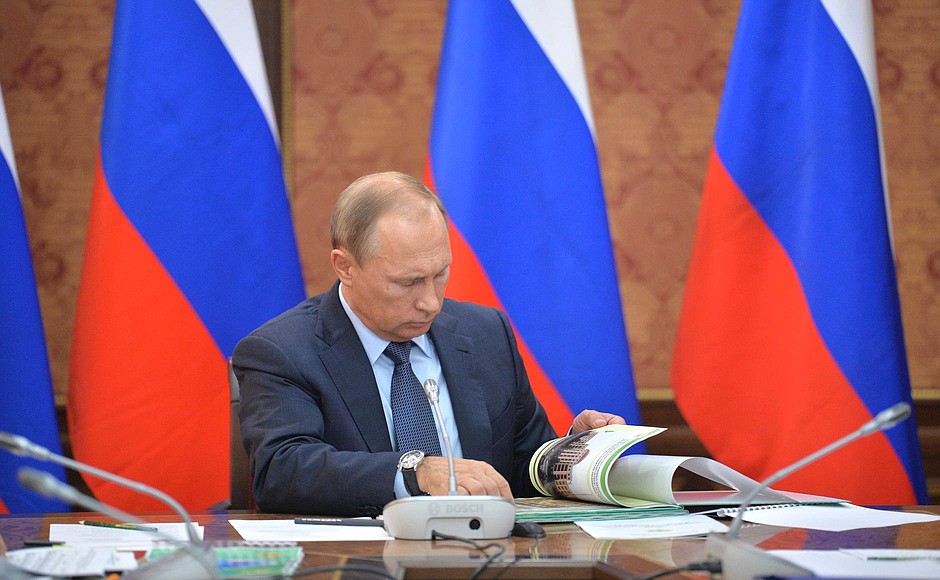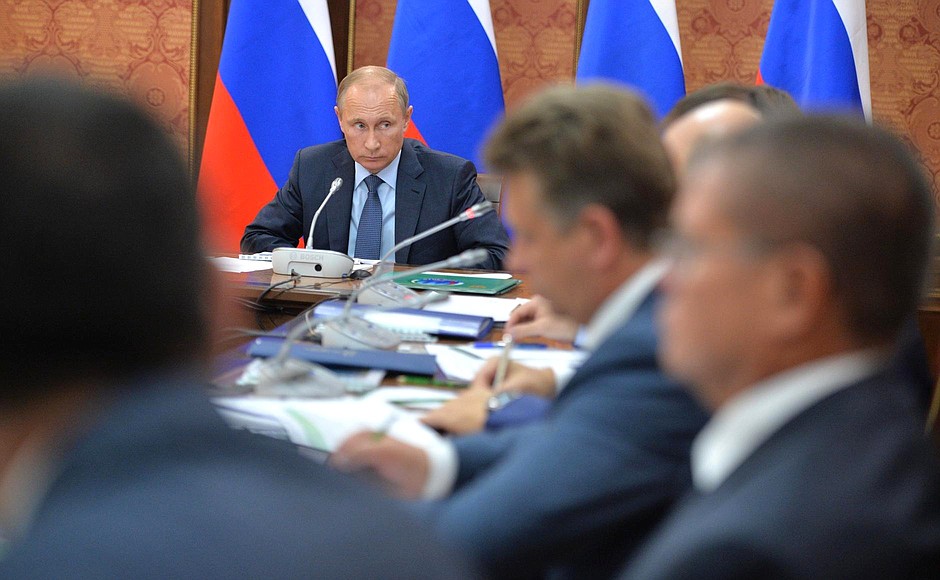President of Russia Vladimir Putin: Good afternoon colleagues.
We are here today to discuss matters concerning Ingushetia’s economic and social development.
The region has achieved some good results in a number of areas over recent years. Industry is showing steady development, and so are the agriculture sector and retail trade.
Ingushetia also has a positive demographic trend and its population continues to grow with every passing year. Like in the other North Caucasus republics, big families are quite common here. This is a good example for the rest of the country, especially as such families enjoy society’s respect and attention here.
At the same time however, the region continues to rely on subsidies and there are still a number of serious economic and social problems to address. The high unemployment level is one of these problems. It is several-fold higher than the national average. Most vulnerable of all are young people and the elderly. They have a very hard time finding work, and even when they do find work, often earn low wages. Wages here are lower than the national average.
There are problems in the social sector too. Ingushetia has one of the highest infant mortality rates in the country. The region lacks qualified doctors and mid-level medical personnel. There is a serious shortage of places in pre-school education facilities. Most schools work in two shifts, and eleven schools even have three shifts.
The 2010–2016 federal programme for Ingushetia’s socioeconomic development was created to address these problems and money has been allocated every year for its implementation. I want to discuss today which parts of the programme have been completed, examine any delays and failures to meet deadlines, and clarify the reasons why.
I was talking with the head of Ingushetia just before and we reviewed the figures once again. In 2014, 4.3 billion rubles in federal budget money was allocated to the programme. A total 4.2 billion rubles have been earmarked this year, and the figure will be perhaps slightly higher – 4.4 billion – in 2016.
It is clear that the key to resolving many of the republic’s problems is to make fuller use of its industrial and agricultural potential. As I have said before, the current situation creates new opportunities for developing production and expanding on the domestic market. This applies completely to the region’s traditionally strong sectors, above all the agriculture sector, light industry and food processing. Setting them on a steady development track and increasing the quantity and range of products will certainly require more active efforts to attract new investment and improve the region’s investment attractiveness and business climate in general. Hopefully, we will be able to discuss all these issues today.
Another important task is to develop the regional healthcare system’s material base. A modern perinatal centre was to have been completed in Nazran by 2016, but there have been construction delays. I want to discuss this today and look at the causes.
Construction of social, cultural and sports facilities is particularly important here. People need to have the right conditions for getting quality medical and education services, and access to varied and interesting leisure and sports opportunities. We need to look at how all of this will be reflected in the programme for the region’s development that I mentioned.
Finally, nearly a fifth of the region’s housing stock, 22.8 percent, consists of dilapidated housing or housing unfit for habitation. This is the highest figure in the country, even higher than in the mining towns. We need to make a thorough and detailed analysis of the work underway to resettle people into better housing.
Let’s start work.
<…>
